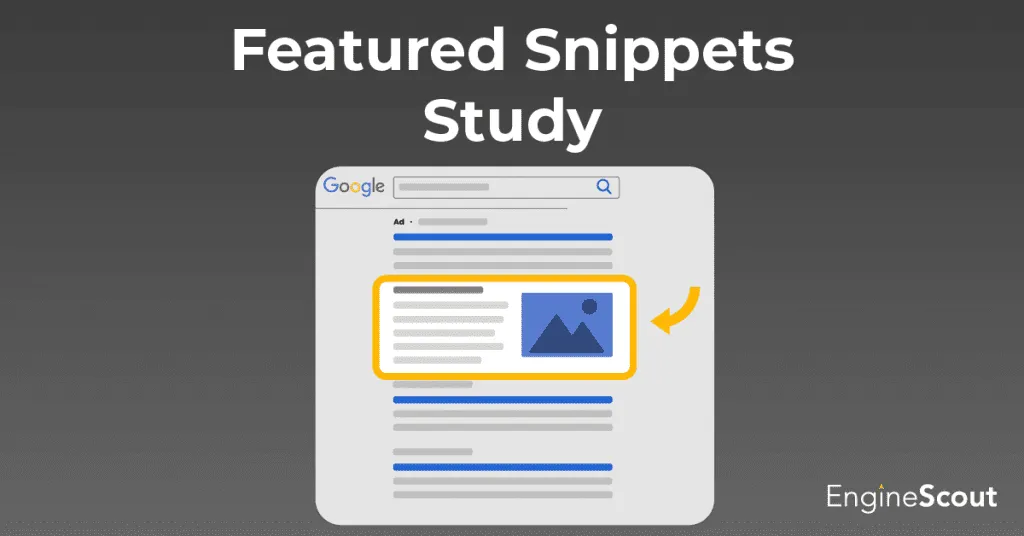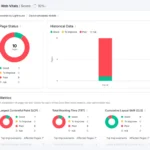
When you search for something on Google and see a highlighted box at the top of the page — that’s a featured snippet. It provides a direct, concise answer to a user’s query, pulled straight from a website.
Ranking in that position — often called “position zero” — can dramatically boost your website traffic and credibility, all without spending a single rupee or dollar on paid ads.
In this guide, you’ll learn how to rank in featured snippets organically by optimizing your content strategically.
What Is a Featured Snippet?
A featured snippet is a short summary of information that appears at the top of Google’s search results, just above the first organic listing.
These snippets are designed to give users instant answers to their questions, making them one of the most valuable placements in search results.
There are four main types of featured snippets:
- Paragraph Snippets – Direct answers to questions (e.g., “What is SEO?”).
- List Snippets – Steps, rankings, or item lists.
- Table Snippets – Data or comparisons in tabular form.
- Video Snippets – Short clips (often from YouTube) answering a query.
Why Featured Snippets Matter for SEO
Ranking in featured snippets can transform your visibility. Here’s why they’re so powerful:
- Top placement: Your content appears above all organic results.
- Higher click-through rate (CTR): Even if users get a preview, many click to learn more.
- Brand authority: Being featured by Google builds trust and credibility.
- Voice search advantage: Many voice assistants read featured snippets directly as answers.
And the best part? You can achieve all this without paid ads — just by creating strategic, SEO-optimized content.
1. Target Long-Tail and Question-Based Keywords
Google’s featured snippets are designed to answer specific questions. So, focus on long-tail keywords that mimic how people actually search.
Examples:
- “How to optimize images for SEO”
- “What is the best time to post on Instagram”
- “Why website speed matters for ranking”
Tips:
- Use tools like AnswerThePublic, Semrush, or Google’s “People Also Ask” section to find question-based queries.
- Create content that directly answers one question per section.
2. Structure Your Content Clearly
Google’s algorithm loves clarity. To earn a featured snippet, your content must be organized, scannable, and structured.
Tips to structure effectively:
- Use H2 and H3 headings for subtopics.
- Include bullet points or numbered lists for easy reading.
- Write short, direct paragraphs (40–60 words) for definitions or answers.
- Add summary boxes or tables when applicable.
The clearer your format, the easier it is for Google to extract snippet-worthy text.
3. Write Concise, Direct Answers
If someone searches “What is on-page SEO?”, Google looks for a short, precise answer — not a long essay.
To optimize for snippet selection:
- Provide a brief answer in the first 2–3 lines.
- Then elaborate with supporting details or examples.
- Keep your answer between 40–60 words — this is the sweet spot for featured snippets.
Example:
On-page SEO refers to the process of optimizing web page content for search engines and users. It includes improving title tags, meta descriptions, headings, internal links, and keyword placement.
4. Optimize Existing High-Ranking Pages
You don’t always need new content to win a featured snippet.
Sometimes, your existing articles are already ranking on page one — they just need minor optimization.
Steps:
- Identify top-ranking keywords for which your page appears in the top 10.
- Check if a featured snippet currently exists for that keyword.
- Update your content with clear, structured answers, bullet lists, or tables.
This approach can help you steal the snippet position from a competitor.
5. Use Tables, Lists, and Step-by-Step Guides
Google loves structured data — and lists or tables are often used for featured snippets.
Examples:
- “Steps to create a blog post” → list snippet
- “Comparison of SEO tools” → table snippet
Best practices:
- Format your steps or comparisons clearly in HTML.
- Use bullet points or numbered lists instead of paragraphs.
- Keep list items short and action-oriented.
6. Optimize for Voice Search
Most voice assistants (like Alexa, Siri, and Google Assistant) pull answers from featured snippets.
Tips to optimize:
- Use natural, conversational language.
- Answer who, what, when, where, why, and how questions.
- Keep your tone informative and easy to read aloud.
By writing in a human-friendly style, you increase your chances of being featured in both voice and visual search results.
7. Improve Overall Page Authority
Google prefers to feature trusted and authoritative sources.
So, improving your domain authority directly increases your snippet potential.
How to build authority:
- Earn quality backlinks from reputable websites.
- Update old content regularly.
- Use schema markup for better context.
- Improve on-page SEO (titles, headings, meta descriptions).
When your content is both high-quality and well-optimized, Google views it as snippet-worthy.
8. Monitor and Adjust Using Analytics
Finally, track your progress using tools like:
- Google Search Console → for featured snippet insights.
- Ahrefs or Semrush → to see which pages are earning snippets.
- Google Analytics 4 (GA4) → to measure CTR and engagement.
If a snippet drops, reanalyze your competitors’ structure and update your content accordingly.
Our Services SEO Services in Jehanabad | SEO Services in Muzaffarpur | SEO Services in Nawada |
Conclusion
Ranking in featured snippets is one of the smartest ways to grow your organic visibility without spending on paid ads.
By focusing on clear structure, concise answers, and question-based keywords, you can make your content stand out as the best possible answer to searchers’ questions.
Remember — Google rewards clarity, precision, and value.
So, the more you focus on helping users, the higher your chances of earning that coveted position zero.
Frequently Asked Questions (FAQs)
1. Do I need to pay to rank in featured snippets?
No. Featured snippets are 100% organic — you cannot buy them. You can only earn them through well-optimized, high-quality content.
2. How long does it take to get a featured snippet?
It varies. Some websites get featured within weeks, while others take months. Consistent optimization and high-ranking content are key.
3. Can small websites rank in featured snippets?
Yes. Even new or smaller websites can win snippets if their content answers user queries better than competitors.
4. Are featured snippets the same as rich results?
No. Featured snippets appear above organic results, while rich results (like stars or FAQs) appear within the listings.
5. Can I lose my featured snippet once I earn it?
Yes, snippets are dynamic. Competitors can overtake you if their content becomes more relevant or structured. Regular updates help maintain your spot.





